Customer name: Jiayu Liu
Location: China
Occupation: New Media Artist
Need: Create a real-time rendered projection mapping of a river for an art installation
Solution: SHINING 3D EinScan Pro series
Result(s): The team was able to accurately capture 3D data of the riverbed. This data was used both to 3D print a replica of the riverbed and generate a simulation of the river’s flow for the projection mapping.
Table of Contents
About Jiayu Liu
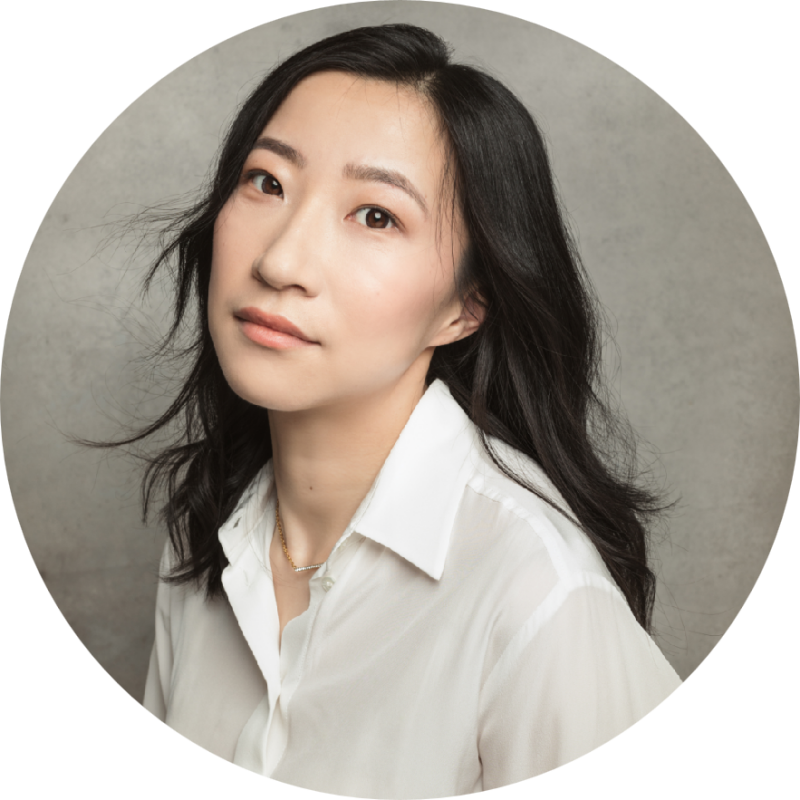
Jiayu Liu is a Chinese new media artist who graduated from the Royal College of Art in the UK. Her works explore the relationship between technology, art, and the environment. She often features light projections that interact with physical spaces to create immersive experiences.
The Fusion of New Media Art and 3D Scanning Technology
New media art encompasses various artistic media, including digital art, virtual reality, and interactive installations. It employs cutting-edge technologies like 3D scanning to explore novel forms of expression.
Artists can capture real-world objects or environments in 3D and transform these digital assets that they can manipulate, enhance, and integrate into their artwork. For Liu Jiayu, SHINING 3D’s EinScan Pro 3D scanner series played a key role in one of her most critically acclaimed art installations, “The Riverside“.
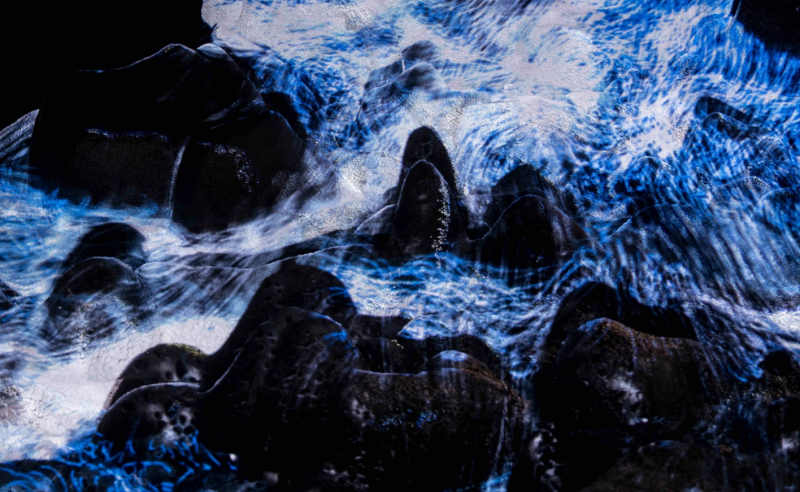
The art piece is composed of two main elements. One, a physical sculpture of a small riverbed at the foot of the Great Wall near Beijing. The second, a projection mapping of the stream’s flow.
This projection mapping is based on fluid simulation that takes into account the time of day at the river’s location. Hence, the mapping’s reflections changes just as the sun and moon go over the river.
Liu Jiayu installed her art right next to the River Thames to create a sort of “wormhole concept”, as she tells designboom. “It allows the experience of the natural state of GMT+8 time zone in the GMT+0,” she explained, “as the visitors walk along the riverside and recalibrate the flowing nature of different cultures.”
Mapping and 3D Scanning for New Media Art Piece “The Riverside”
Creating this artwork involved several key steps, from 3D scanning to motion graphics and the final installation.
3D Scanning the Riverbed
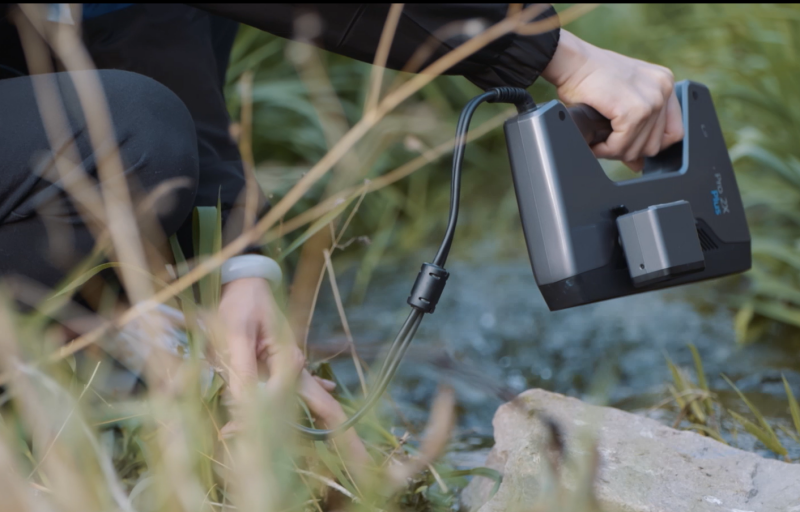
The first step of bringing her artistic idea to life was to replicate the river’s bed. 3D scanning was the ideal technology to get a representation that’s as close to reality as possible. But there are dozens of types of 3D scanners and 3D scanning technologies.
For this project, the 3D scanner had to be:
● portable enough to bring along to the river
● and able to capture textures.
Liu’s team decided to use a portable, handheld 3D scanner from the SHINING 3D EinScan Pro series. This lightweight format enabled them to easily scan the riverbed on-site, without a complex installation. The team was able to 3D scan the riverbed section in a matter of hours – a quick and efficient session.
EinScan Pro series 3D scanners support color capture (“Color Pack” add-on) and texture scanning mode, adding rich details to the final 3D scan of the riverbed.
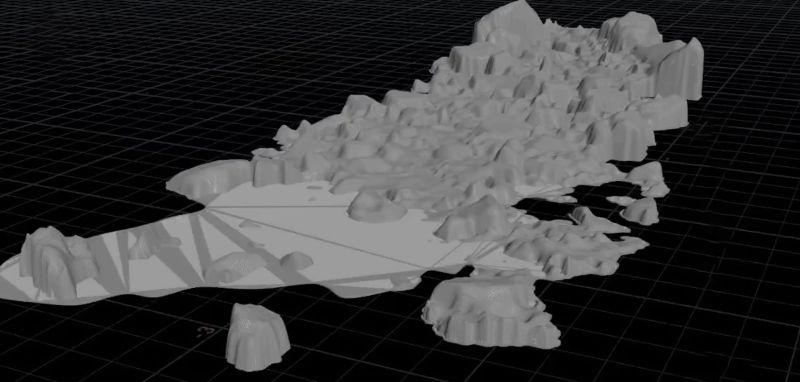
Fluid Simulation and Motion Graphics
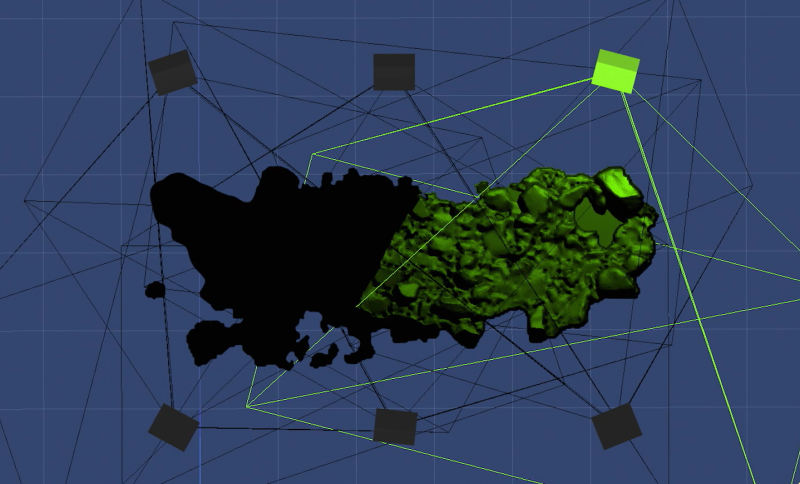
After obtaining accurate 3D data of the riverbed, the Artists and Engineers (A+E) agency from London needed to create a fluid simulation for the projection mapping.
First, they imported the data to SideFX’s Houdini for the water flow simulation, and to extract its different levels of particles. Then, A+E exported these particle levels as well as the 3D scan’s geometries to vvvv software, a multifunctional motion graphics toolkit.
With various techniques and a lot of talent, the engineers were able to develop just what Liu needed. “We developed a real-time visualisation based on simulated water flow over the scanned riverbed geometry [. We incorporated] the time of day at the location of the riverbed to provide reflections and sun/moon position,” explains A+E on their website.
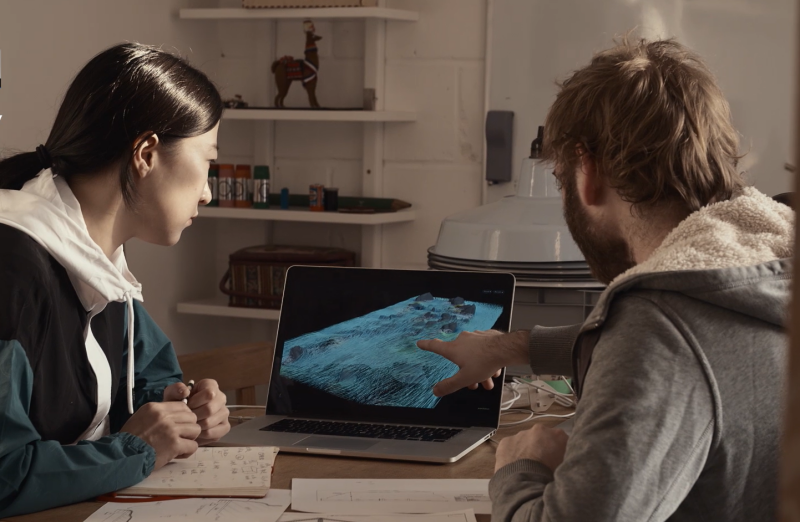
Projection Mapping and Sculptural Integration
Liu Jiayu sent the 3D model of the riverbed to a sculpture factory, to get the second key component of her art. The factory was able to replicate all of the rich details present in the 3D model from the EinScan 3D scanner.
Finally, the A+E team used six high-definition projectors to map the riverbed sculpture and finetune the projection’s coverage and brightness.
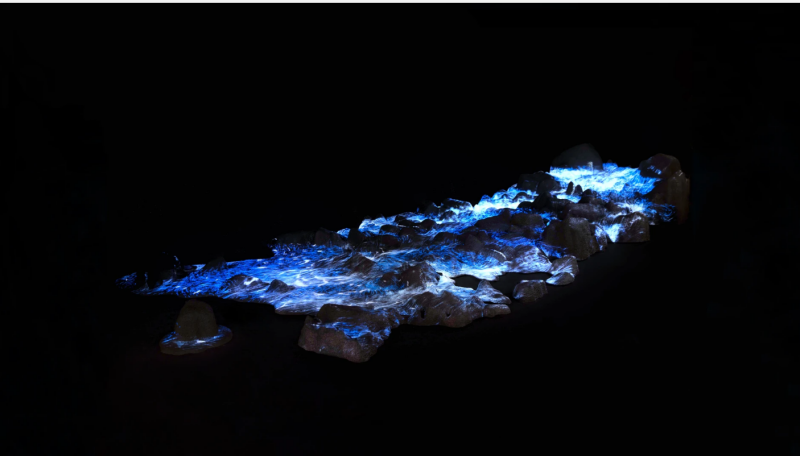
Conclusion
Liu’s mesmerizing masterpiece enabled thousands of Londoners to feel a small but powerful piece of a river located over 8,000 kilometers away.
Using new technologies to create art – new media art – is certainly an interesting way to mix cultures and nature. In this case, 3D scanning played a key role in producing both the 3D sculpture and the projection mapping.
As technology and art intertwine, the future holds limitless possibilities for captivating and immersive experiences in new media art.
Are you interested in using 3D scanning for new media art applications? Feel free to reach out to us for a quote or help choosing the right technology and hardware. We’d love to hear from you and learn about your artwork!
Alternatively, you can use our free product selector (no sign up or email required) to get an instant, personalized recommendation based on your needs.





